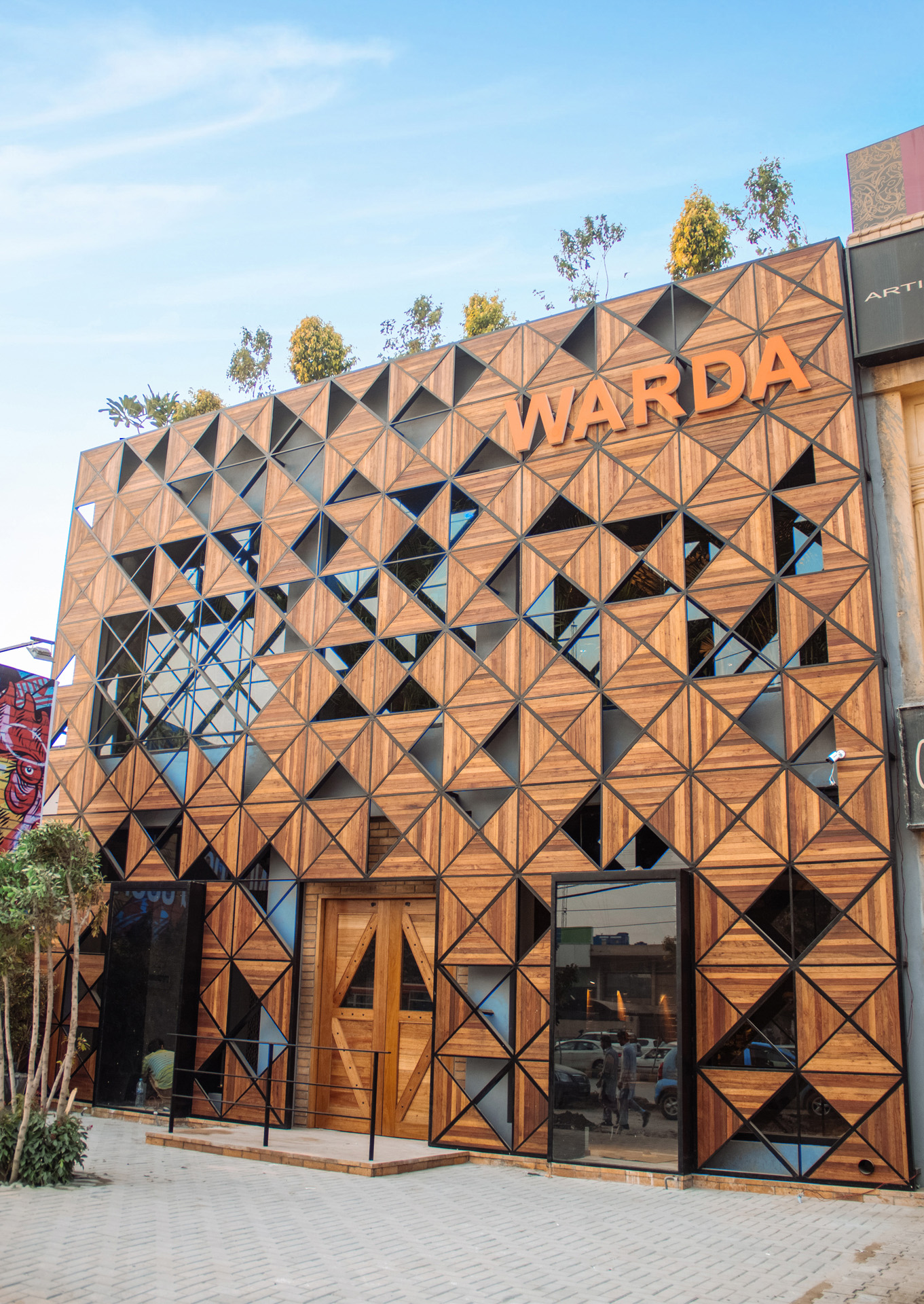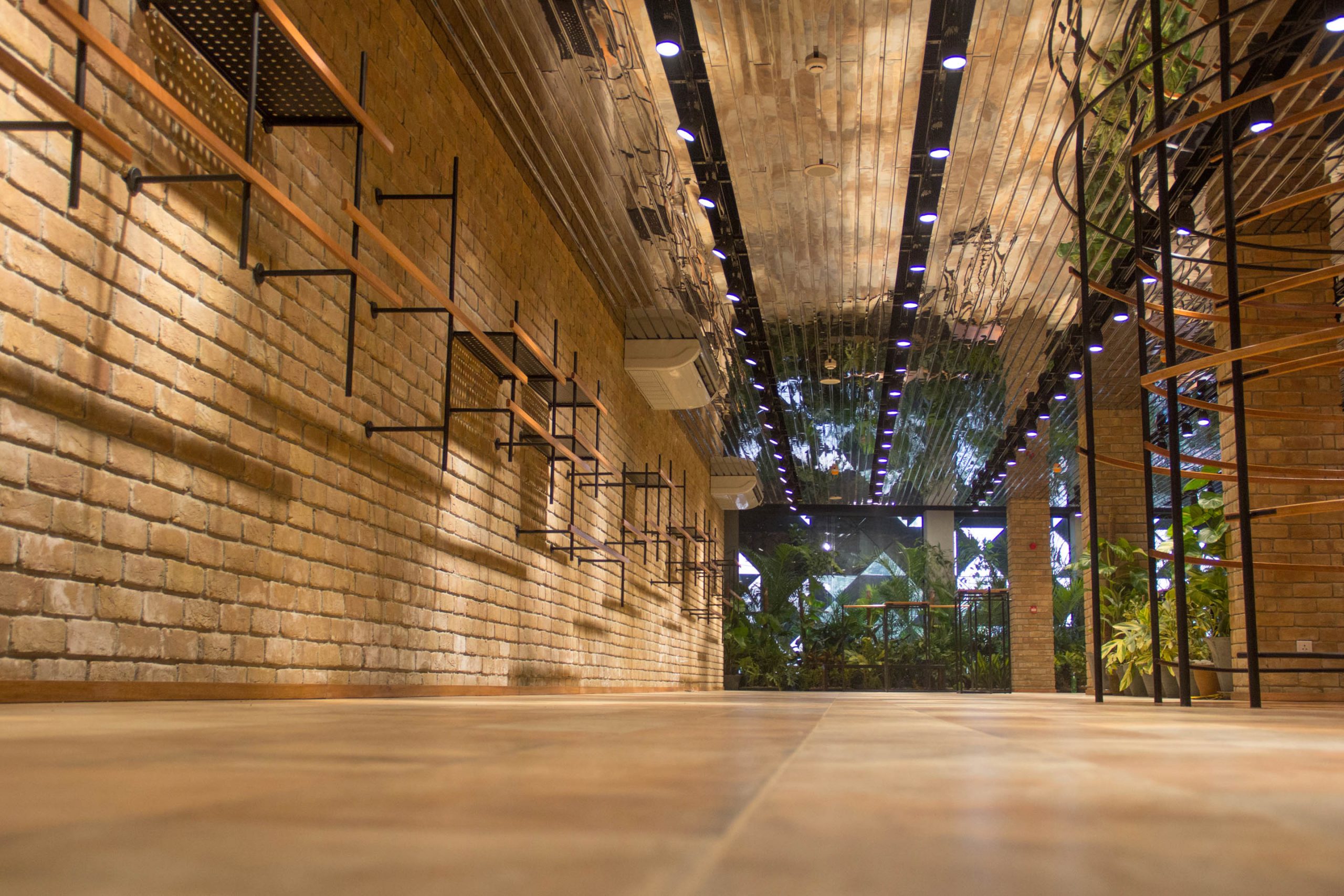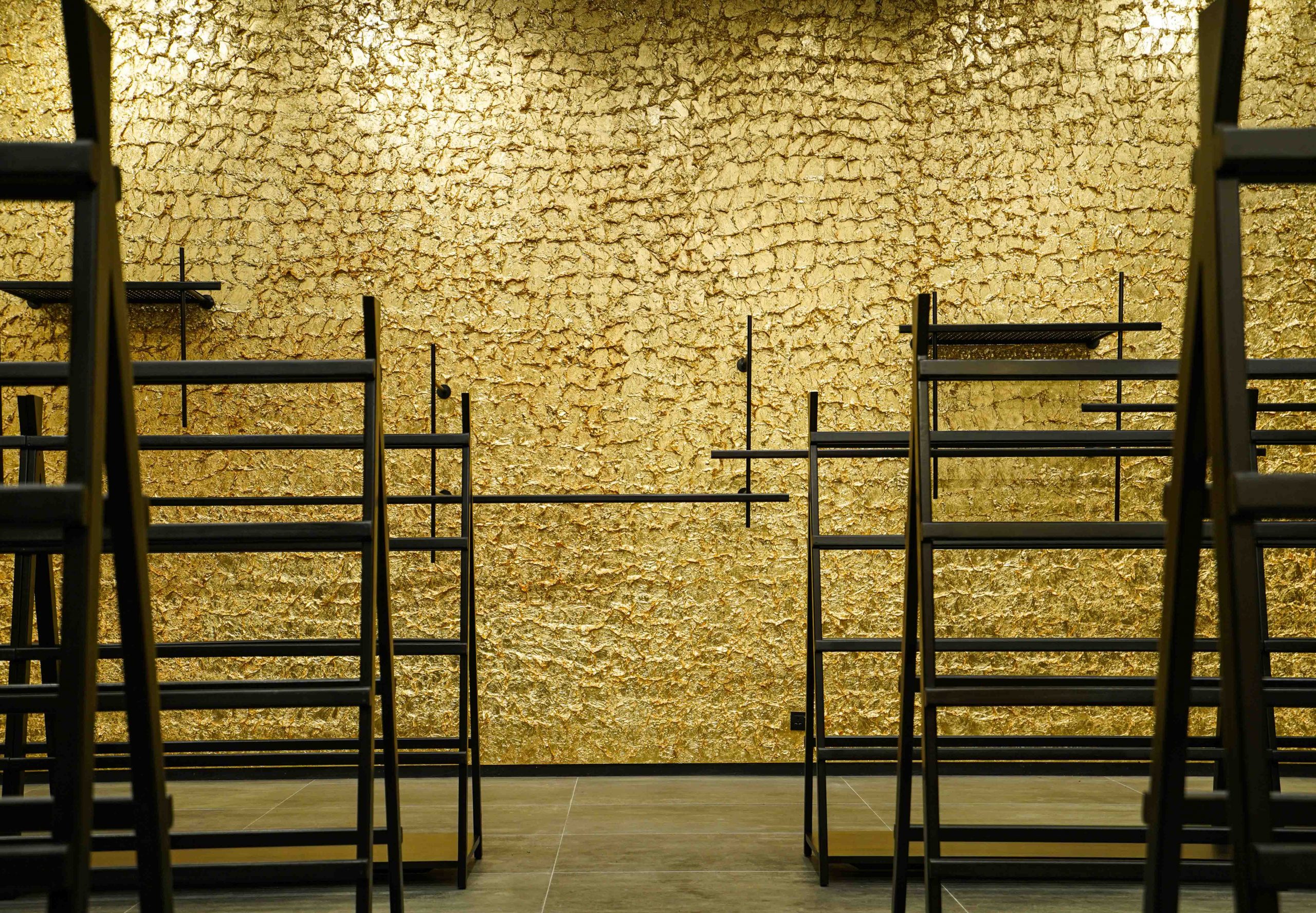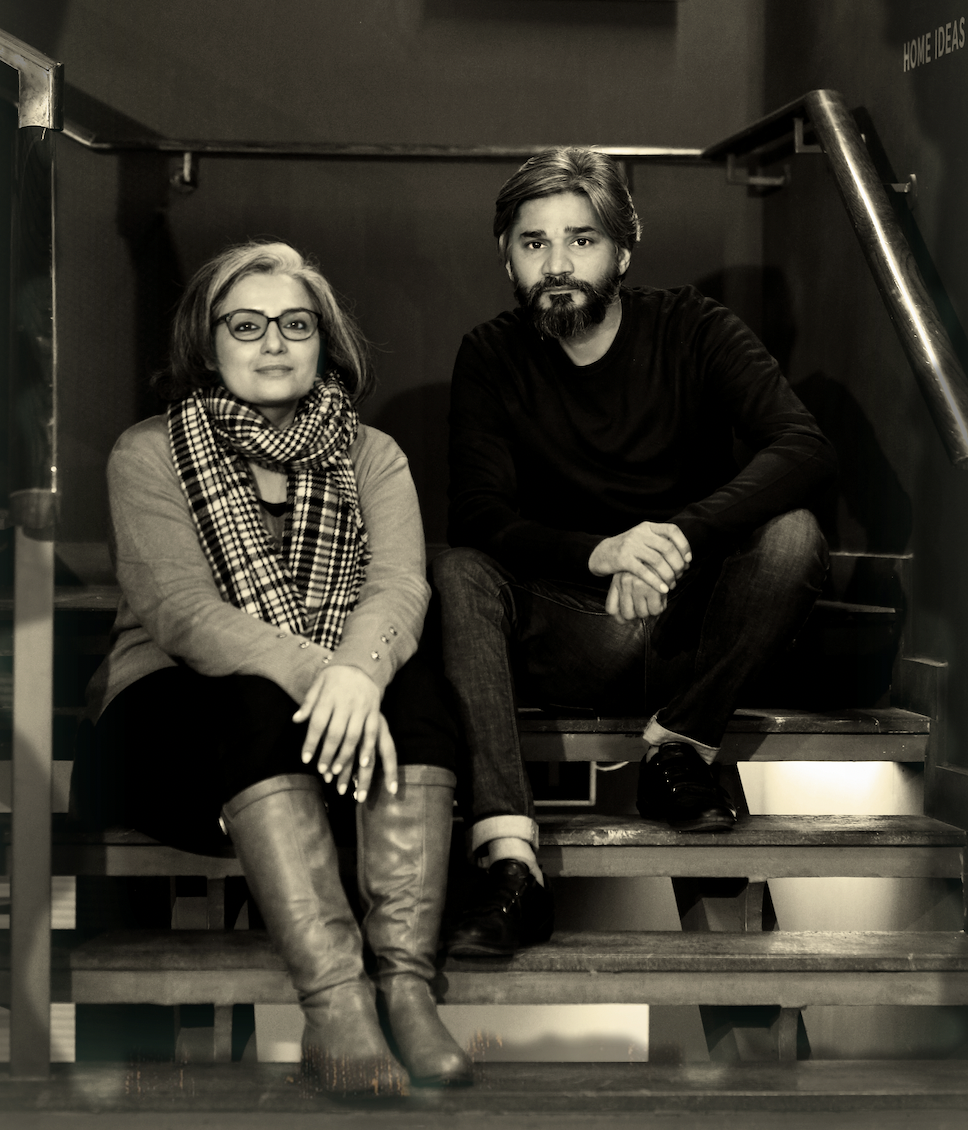This month, Asia Designers Directory casts the spotlight on Syed Fawad Hussain, founder and principal architect of award-winning Pakistani architectural firm, Metropolitan Studio of Architecture (MSA). With an academic background covering both architecture and philosophy, Syed Fawad Hussain brings fresh perspective to his work. He is also part of the prestigious Architecture Design institutes of Pakistan.
Amongst the many awards, Metropolitan Studio of Architecture (MSA) won the prestigious Prix Versailles Design Award in 2018 for clothing brand WARDA’s flagship store in Peshawar, Pakistan. Can you tell us about the design considerations and what does this win says about Pakistani architecture?
The Prix Versailles award held at UNESCO Paris was a very proud moment not only for us, but for Pakistan as well. We were so honoured that H.E Pakistan’s ambassador to France at that time, H.E Mr. Moin-ul-Haq also attended the ceremony and accompanied us on the stage to receive the award.
MSA collaborated with WARDA, a clothing brand, on designing their new stores, which are planned in various cities of Pakistan. Peshawar Flagship is the first in this series. Each flagship store is designed keeping in mind the idea that it will serve as a rejuvenating avenue for the brand. MSA has taken this collaboration as an opportunity to look closely at the retail culture of Pakistan in general and WARDA retail strategies in specific. These explorations helped in developing an overall thematic of the brand, where context becomes the central focus of the aesthetics of the flagships.
- Warda, Peshawar, Pakistan
- Warda, Peshawar, Pakistan
- Warda, Peshawar, Pakistan
- Warda, Peshawar, Pakistan
- Warda, Peshawar, Pakistan
The aesthetics of the project is driven by the careful study of the history of the built heritage of the city. From the choice of the material to its craftsmanship, the project relied on the local resources at the same time the project is a dedication to the contemporary culture of retail. MSA conducted thorough research of the built heritage of the city Peshawar. The city has a long history of using brick as a main construction material and wood as the main interior material.
MSA has inverted this relationship by using wood as the main exterior material and brick as the main finishing material for the indoor walls. This shift of materials has given the flagship a unique aesthetic experience and still maintains the local material pallet. This front metal and wooden screen mitigate the solar gain and also helps control the natural light intake. The wall behind the long cash counter is created in wood by employing a traditional technique “Tarseem Bandi”, where the geometric pattern is made in wooden pieces and the spaces in between the pattern lines are given unique colors. This technique of the Tarseem Bandi was usually employed on the ceilings of the traditional Havelis of the city.
Another important feature of the project is its indoor and outdoor plantation. A large portion of the indoor space is dedicated to a plantation in a jungle-like arrangement. A tree is planted in front of the main door of the flagship that welcomes the custumers and participates in creating a distinctive sense of place. This tree grows with the store and both share a common history. The overall project heavily borrows its material and technical sensibilities from the building tradition of the city, Peshawar.
This award is not just a recognition of the design of the store but also it is a recognition of the country and the potential of various industries involved in the realisation of this project. And this win has encouraged a lot of young architects to start sending their work to international platforms. I think each recognition at one level or another brings a positive change in the overall scenario of the practice both in the office as well as in the country.
In 2021, MSA bagged The Prix Versailles Continental Award once again for another retail store, where gold was a recurring statement feature throughout. What inspired this design and were there expectations to surpass the design of the first flagship store?
There was no such idea of making this store better than the previous one. Each store has its unique positioning in its particular city and site. The core idea of our practice demands to maintain the individuality of each and every project. We call this idea “localised concepts”. The term ‘localised’ here is used as an antonym to universal not merely referring to a specific geographical region or location. That is precisely why they cannot be conceived a priori or cannot be generalised as commonly known. They are created at a very local level.
Local in every sense of the word, they are limited, restricted, confined, bounded, these concepts are local at all levels, social, regional, political, economic, environmental, and historic yet invested with powers to change to pre-empt and to create the new. This specific approach to design prohibits us from even comparing the projects, though they have been done for the same client.
The Gold Rush is situated in a mall setting where there are a number of other stores placed next to each other. The first challenge for a brand in these kinds of settings is to stand out and our task was not only to make the store stand out but can be described in one single word. Then we choose Gold as a celebration of color as well as a cultural symbol for the subcontinent. Gold is widely present in the culture of this part of the world. It is not only found in the form of precious metal but also shows its presence in the landscape of this area starting from the color of the sunshine to the ripened wheat fields to the color of the desert sand. It even transcends visual culture and entered into the language as well. In fashion, gold jewelry transcends all norms of the conventional fashion sense. It is part of all types of clothes irrespective of their colors or cuts. Gold requires no matching.
- Gold Rush, Lahore, Pakistan
- Gold Rush, Lahore, Pakistan
- Gold Rush, Lahore, Pakistan
On the other hand, the store design explores gold paper as an architectural interior material that provides the interior with a colour loved by all along with a unique texture. This bold application of the paper as the material gives the store a distinctive presence. Twenty-two thousand gold leaf papers were pasted by hand in this store. Each paper bearing the touch of the craft person acquires a unique texture and form. The store design is kept minimal intentionally so that the material gets a chance to express itself more profoundly.
Gold has shaped people of this part of the world in many ways as much as they have molded it into our material culture. This very store is also an expression and acknowledgment of the association, this part of the people has with gold.
What do you think is the role of architects in modern society? What are some trends that have a strong influence on today’s designs?
The role of an architect, it seems, is changing with time. From a master builder to a coordinator of all the collaborating partners. And sometimes these expanding scenarios take an architect’s attention away from architecture’s core metaphysical and existential focuses. Most of the services that are being rendered by other partners become the main focus and deciding factor in an architectural project. This illusion of doing architecture keeps an architect away from his/her real work as an architect – in Juhani Plasma’s words “to mediate and articulate our relations with the world which is more significant than the utility or rationality of the buildings”. The core conceptual issues of space and time and their manifestations through tangible materials are and will remain always the core focus of architecture. And today’s overemphasis on technology and digital media taking away this artistic and societal autonomy from architecture. The intelligent use of technology can even help us to attain that. Unless we are designing for the real world and in the real world, we need to stay close to our ancient sensibilities that we have not only inherited but also have the responsibility to transfer. The buzz words and fast transitory trends only create distractions towards the achievement of fundamental architectural goals.
- Urban School, Lahore, Pakistan
- Urban School, Lahore, Pakistan
- Urban School, Lahore, Pakistan
How are philosophy and architecture interrelated?
The process of creating architecture is closely related to an individual and his/her personal thoughts and memory. This is the backdrop in which architecture takes shape and philosophy helps in developing that backdrop. According to French Philosopher Deleuze, “the function of philosophy is to create concepts”. And these concepts create new world views that provide a milieu to work on. One cannot translate philosophical theories into architecture directly.
How do you sum up the achievements of MSA in the past few years and how have you evolved as an architect?
We at MSA are trying to build a practice that is continuously involved in pushing the boundaries of the profession. For this purpose, we have a research wing called MSA-RI (Research Initiative). This wing initiates its own independent research, as well as research, originating from the studio design projects. Every year, MSA holds an exhibition “Open Day at MSA” to showcase the work done in one calendar year. This exhibition is organised in the studio space and students from all over Pakistan are invited. The students have the opportunity to interact with all of us involved in the process of designing and also to look at the process of work – even the design journals maintained by all individual designers. This activity actually helps build a connection between academia and practice. We think that we have evolved the structure of the studio and of work as such that helps us to approach design in a certain specific way that results in an expression that is unique. We consider this approach to doing architecture and disseminating architecture our biggest achievement. But still, we think we have a long way to go.
|
|
|
About Metropolitan Studio of Architecture (MSA)
Based in Lahore, the Metropolitan Studio of Architecture is a multiple award-winning studio of architects, interior designers, visualizers, and thinkers. The unique design approach of the MSA is based on two uncompromised features of practice; the development of a sustained line of inquiry and a multi-disciplinary approach to generating discourse.
MSA has received acclaim as one of the most influential names in Architecture Design by Architectural Digest, India in addition to representation on various prestigious forums in South Asia. The studio has also won numerous national and international awards including a two-time winner of the Prix Versailles Continental award in Paris, France, two-time winner of the Eurasian Prize, Ekaterinburg, Russia, and World Architecture Award 28th, 29th, and 31st cycles. MSA has also published its first monograph with the name Assemblage. It is in the collection of various libraries including Shanghai Jiao Tong University Library.
Syed Fawad Hussain is an architect and philosopher with an academic background in both fields. He is the founder and Principal Architect at Metropolitan Studio of Architecture and also heads the works of MSA-RI and MSA Collaborative. Prior to establishing a full-time practice in 2009, he worked as an independent architect and educator. He has been part of prestigious Architecture Design institutes of Pakistan throughout his career. He is currently an Associate Professor and Coordinator of the School of Architecture Design and Urbanism at proposed University of Culture & Art (UCA) and Associate Professor at Interior Design Department at the National College of Arts (NCA). Apart from playing an active role in academia, Syed Fawad Hussain is also editor of the newsletter and journal of Institute of Architects of Pakistan (IAP). He is currently serving as vice president of Institute of Architects of Pakistan, Lahore chapter. He has also been honored to represent Pakistan and IAP internationally as a member of ARCASIA committee on Green and Sustainable Architecture (ACGSA).
Leena Hassan is the Partner and Principal Interior Designer at the MSA and a multi-discipline specialist. She specializes in corporate interiors and has headed numerous interior projects from their inception to completion. In addition, she is also well-known for customized furniture solutions that cater to the needs of the interior space and her clients. Moreover, she is also a distinguished Color Consultant who has worked and presented her ideas at many prestigious forums.












